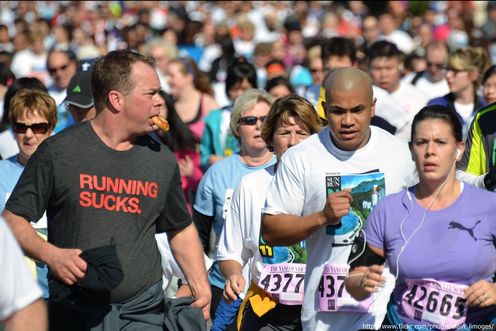
Two articles published in today’s issue of The BMJ argue physical activity guidelines should focus on getting inactive people to move a little rather than having the entire population meet the 150 minutes of moderate activity a week target. The papers may give heart to those who can already see their new year’s resolution to get fit slipping away.
“It can be as simple as spending more time on your feet, and just moving around,” said Professor Neville Owen, Head of the Behavioural Epidemiology Laboratory at Baker IDI, who is co-author of one of the papers. “Regularly standing up or taking a wander about the room can make a worthwhile difference compared to sitting and sitting and sitting.”
Professor Owen contributed to an article that recommends reducing and breaking up sitting time, along with introducing light-intensity activity, be prescribed for those who might find meeting current exercise targets too formidable a challenge, especially older adults.
Australia’s Physical Activity and Sedentary Behaviour Guidelines, last updated in February 2014, recommend a minimum of two-and-a-half hours of moderate physical activity a week to ensure health benefits, and five hours to prevent unhealthy weight gain. The guidelines are based on established evidence that shows how important moderate to vigorous activity can be for health benefits.
Professor Jo Salmon from the School of Exercise and Nutrition Sciences at Deakin University defined moderate exercise to include activities such as brisk walking, while vigorous exercise is a jog “where you get a bit more huff and puff”. She said to follow the guidelines, the pace of physical activity was most important.
“This is where a lot of people fall short,” she said. “I walk my dog every morning and that is very rarely at a brisk pace!”

The second article highlighted the health benefits of activity, even when it falls short of the recommended amount. Author Philipe de Souto Barreto told the BMJ government guidelines should encourage inactive people to gradually increase physical activities in their daily life, rather than feeling they must immediately achieve two-and-a-half hours of moderate activity a week.
Professor Salmon said there was emerging evidence that light-intensity activity, such as standing up at your desk, moving around the house, going out shopping and wandering around the streets, was also beneficial.
Professor Owen said doctors could advise patients to cut down on the time they spent sitting. Or if they needed to sit, to break it up with standing breaks.
“This is the kind of thing people can do without having to make special arrangements or plans, without putting on their walking shoes and all of that,” he said. “It’s something that can happen in the normal texture of domestic life and even working life for some people.”
But before you abandon the treadmill in favour of standing next to it, Professor Owen also said the current guidelines were still important.
“It’s not either/or, and it’s not ‘we’ve got a wonderful alternative now to exercise [sitting less]’. Both are important but in our highly-inactive society, more exercise and as much activity as possible is best,” he said.
The most recent survey of Australians found that 56% of us aren’t active enough.
